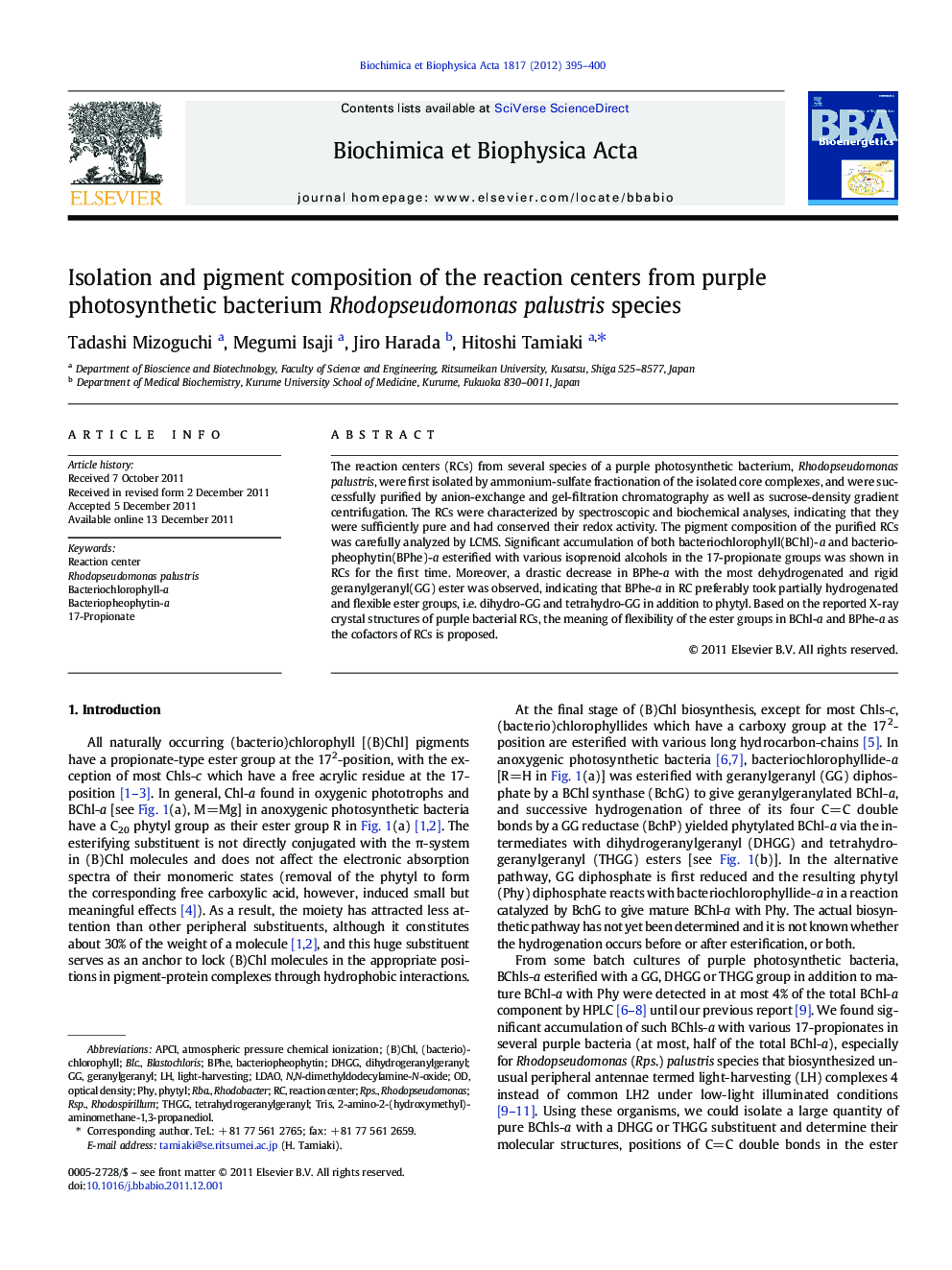| Article ID | Journal | Published Year | Pages | File Type |
|---|---|---|---|---|
| 1942473 | Biochimica et Biophysica Acta (BBA) - Bioenergetics | 2012 | 6 Pages |
The reaction centers (RCs) from several species of a purple photosynthetic bacterium, Rhodopseudomonas palustris, were first isolated by ammonium-sulfate fractionation of the isolated core complexes, and were successfully purified by anion-exchange and gel-filtration chromatography as well as sucrose-density gradient centrifugation. The RCs were characterized by spectroscopic and biochemical analyses, indicating that they were sufficiently pure and had conserved their redox activity. The pigment composition of the purified RCs was carefully analyzed by LCMS. Significant accumulation of both bacteriochlorophyll(BChl)-a and bacteriopheophytin(BPhe)-a esterified with various isoprenoid alcohols in the 17-propionate groups was shown in RCs for the first time. Moreover, a drastic decrease in BPhe-a with the most dehydrogenated and rigid geranylgeranyl(GG) ester was observed, indicating that BPhe-a in RC preferably took partially hydrogenated and flexible ester groups, i.e. dihydro-GG and tetrahydro-GG in addition to phytyl. Based on the reported X-ray crystal structures of purple bacterial RCs, the meaning of flexibility of the ester groups in BChl-a and BPhe-a as the cofactors of RCs is proposed.
► Reaction centers (RCs) from Rhodopseudomonas palustris species were first isolated. ► Their bacteriochlorophyll-a & bacteriopheophytin-a had various 17-propionate esters. ► The bacteriopheophytin-a takes preferably more hydrogenated geranylgeranyl groups. ► The flexibility of the 17-propionates is discussed using crystal structures of RCs.
